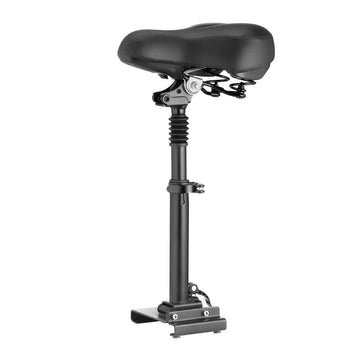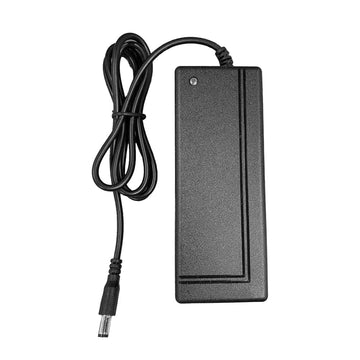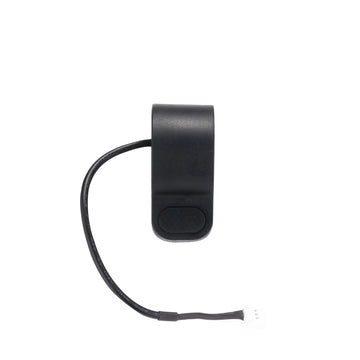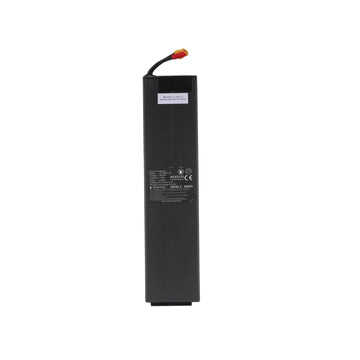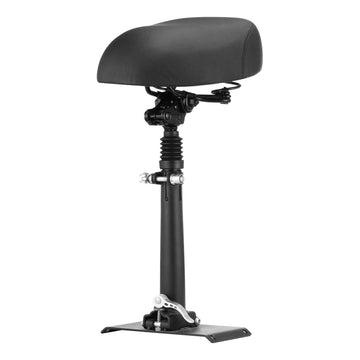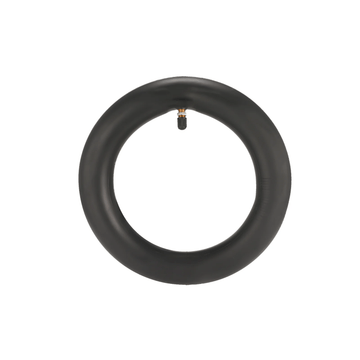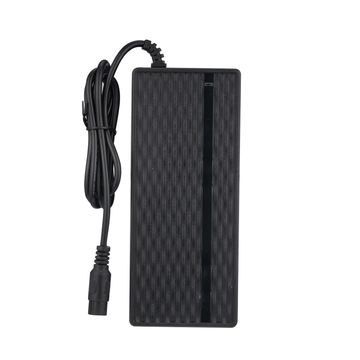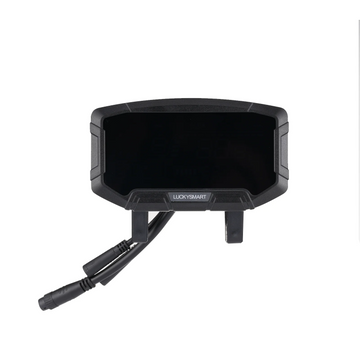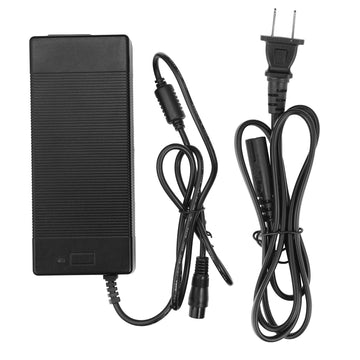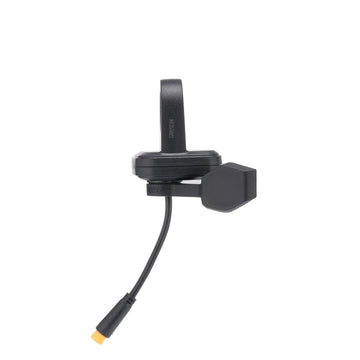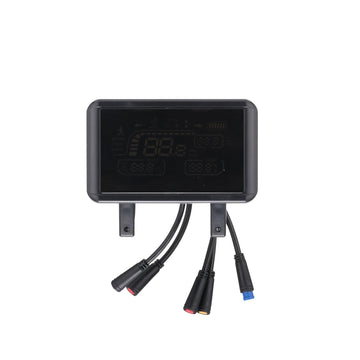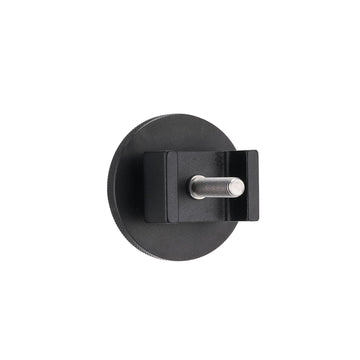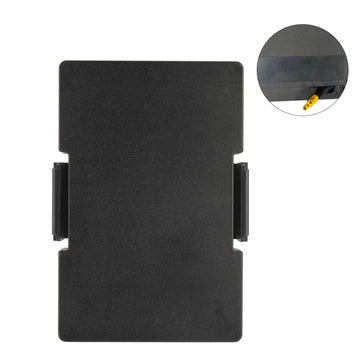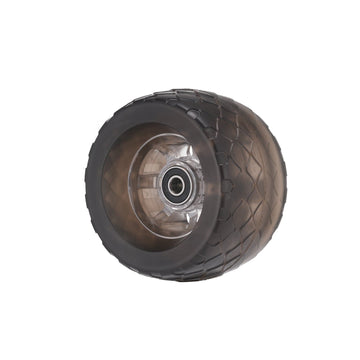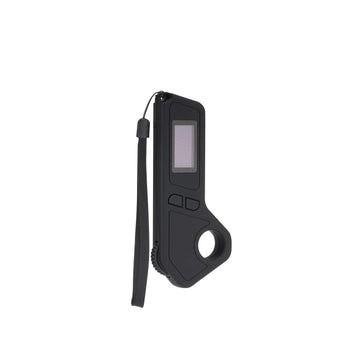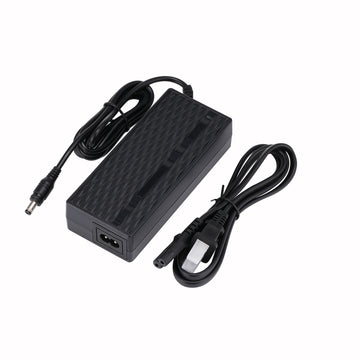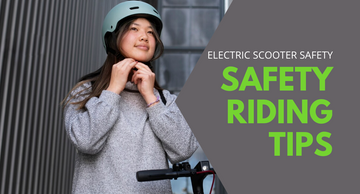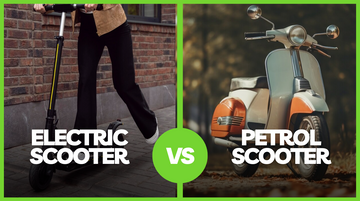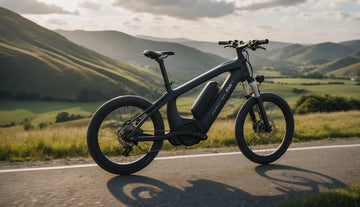
When picking an electric bike, it's really important to think about the e-bike range, which is how far you can go before you need to charge the battery again. The range depends on how much power the battery holds, how good the motor is at using this power, and whether you're going up hills or riding on flat roads.
The distance you can ride isn't just about how big the battery is, which is shown by watt-hours (Wh). It's also about how you ride the bike. Even with a big battery, things like riding gently, having a motor that saves power, choosing the right tires, and not having a heavy bike can help you go further.
Ready to learn more about e-bike range and how to ride further on each charge? Keep reading to get smart tips on using your bike's power the best way. Let's find out how you can ride longer and have more fun with your electric bike!
What Is Electric Bike Range?

E-bike range is the distance you can travel on a single charge. It's influenced by battery capacity (measured in watt-hours, Wh), motor efficiency, and riding conditions.
-
Battery Capacity: Larger batteries generally provide a longer range. For example, a typical eBike battery may offer about 1 mile per 20Wh, meaning a 672Wh battery could deliver rides of up to 33.6 miles.
-
Motor Efficiency: Highly efficient motors use less energy to provide the same power output, increasing the potential range.
-
Riding Conditions: Terrain, weather, and carrying load affect energy consumption. Hills and headwinds require more power, whereas smooth surfaces and tailwinds demand less.
Factors Affecting Range:
-
Battery age and health
-
Rider weight
-
Tyre pressure
-
Assist level used
-
Stop-and-go frequency in urban settings
Most e-bikes feature a removable battery, allowing for convenient charging.
Real-world conditions can lead the range to vary from manufacturer estimates. Always consider your typical riding distance and environment when selecting an e-bike for its range capabilities.
Also read our guide: How Do Electric Bikes Work? and How Fast Does an Electric Bike Go? Complete Guide
Assessing Battery and Motor Aspects

When evaluating an electric bike's range, two crucial components to consider are the battery capacity and the motor power. These elements are instrumental in determining how far your e-bike can travel on a single charge.
Significance of Battery Capacity
The battery capacity, typically measured in watt-hours (Wh), is a pivotal factor in your e-bike range. It signifies the amount of energy stored within the battery that can be used to power the motor. Here's how you can understand this metric:
-
Watt-hours (Wh): It's the product of the voltage (V) and amp-hours (Ah) of the battery. For instance, a 36V battery rated at 10.4Ah results in 374.4Wh (36 V x 10.4 Ah = 374.4 Wh).
-
Lithium-ion Batteries: They are commonly used because of their high energy density, which means they can store more power in a smaller and lighter package compared to other types of batteries.
Remember, actual mileage may differ based on factors such as rider weight, terrain, and riding habits.
Also read: How Do Electric Bikes Work?
Understanding Motor Power
The motor power, expressed in watts, primarily affects the e-bike's maximum speed and acceleration. However, it also has an impact on energy consumption. Here’s what you should know:
-
Higher Watt Rating: A motor with a higher wattage will consume energy more quickly, potentially reducing the range.
-
Efficiency: It's not just about the power; it's also about how efficiently the motor uses the battery power to propel you forward.
Insight on E-Bike Power Usage
E-bike range and power usage are closely tied to your riding habits and the conditions in which you ride. By understanding these aspects, you can maximize your e-bike's battery life and efficiency.
The Impact of Rider Behaviors on Range
Your riding behaviors significantly influence the power usage and, subsequently, the range of your e-bike.
If you often use the bike's throttle to accelerate quickly or maintain high speeds, this will increase your power usage. In contrast, making use of pedal assist can enhance your range.
Here's how different levels of pedal assist affect your power consumption:
-
Throttle-only riding: Consumes the most energy (High power usage)
-
High-level pedal assist: Balances effort and battery use (Moderate power usage)
-
Low-level pedal assist: Maximizes range with minimal battery use (Low power usage)
When you cycle, the total weight on the e-bike, including your weight and that of any passengers or cargo, can also drain the battery faster.
More weight requires more energy per mile, which decreases the overall range of your e-bike.
How Conditions Affect Consumption
Various external conditions can impact your e-bike's power consumption and battery usage:
-
Elevation: Climbing hills requires more power, increasing consumption expressed as watt-hours per mile (wh/mi).
-
Terrain: Rough or uneven terrain can boost energy use, reducing the range.
-
Weather: Extreme temperatures can affect battery performance and hence power usage.
Knowing the watt-hours (Wh) your battery provides can help you estimate the range.
For instance, a 500Wh battery might give a range of about 25 miles with high power mode and more conservative riding could extend it to 50 miles or beyond, considering average power usage.
Always remember to factor in your weight and the bike's total weight, as heavier loads will increase power usage and deplete the battery sooner.
To get a clearer picture of power consumption, you might notice specifications such as a 500Wh battery typically consumes 0.5 kilowatt-hours (kWh) of electricity to charge fully.
This kind of precise metric aids in estimating the range and cost of charging your e-bike.
Related read: Can You Ride an Electric Bike in the Rain? (Safety Tips for Wet Weather)
Factors Influencing E-Bike Range

When considering the range of your e-bike, two key areas significantly affect performance: the environment you ride in and the specific characteristics of your bike and its components.
Terrain and Weather Considerations
Terrain: The type of terrain you encounter plays a critical role in how far your e-bike can go on a single charge.
Riding on hilly terrain requires more energy, reducing the e-bike's range due to increased resistance.
Similarly, rolling resistance is higher on rough or unpaved surfaces, as seen with fat tires that are designed for stability and grip rather than efficiency.
- Flat terrain: Generally allows for extended range.
- Hilly terrain: Consumes more power, reducing range.
- Weather Conditions: Factors such as headwinds and rain can increase resistance, thereby requiring more energy and decreasing the range.
Contrarily, a tailwind can assist your ride and extend your e-bike range.
Weather-related wind conditions should always be considered, as strong winds can greatly impact the efficiency of your ride.
Bike and Accessory Characteristics
The very design of your e-bike, including its components, influences how far you can travel on a single charge.
The battery capacity, usually expressed in Watt-hours (Wh), directly correlates with range—the higher the Wh, the greater your potential travel distance.
Additionally, the motor's efficiency and the weight of the bike, inclusive of any accessories, will impact your e-bike range.
Maximizing Your E-Bike's Range
Enhancing your e-bike's range is achievable through strategic riding habits, diligent maintenance, and adopting additional efficiency measures. By applying these practices, you'll ensure optimal performance and longer rides on a single charge.
Strategic Riding Techniques
Using your e-bike's features effectively can make a significant difference in range. Here's how:
-
Throttle and Pedal Assist: Use pedal assist to augment your pedaling efforts rather than relying solely on the throttle. This increases efficiency by conserving battery power.
-
Gears: Shift mechanical gears appropriately to maintain a comfortable cadence. This can help extend your battery's life by reducing the strain on the motor.
Bike Maintenance and Upkeep
Regular maintenance optimizes an e-bike's performance. Concentrate on these areas:
-
Tire Pressure: Maintain tires at the correct pressure to reduce rolling resistance and prolong battery life. Reference your manufacturer’s guidelines for the ideal psi.
-
Drivetrain: Keep the drivetrain clean and lubricated to ensure smooth pedaling and minimal energy loss.
Additional Measures for Extended Range
Beyond riding techniques and maintenance, consider these tactics:
-
Spare Batteries: For longer trips, carry a fully charged spare battery to swap when the primary one depletes.
-
Charge Management: Charge your battery after use and store it in a cool, dry place to preserve its longevity and capacity.
Understanding Bike Range Specifications
When considering an electric bike (e-bike), understanding the range specifications provided by manufacturers is crucial for determining how far your e-bike can travel on a single charge.
Calculating Estimated Ranges
Manufacturers often provide an estimate of an e-bike's range based on optimal conditions. To calculate these estimates, they use a standard formula that relates battery capacity to potential distance:
-
Estimate Formula: Bike Range (miles) = Battery Capacity (Watt-hours) / Average Consumption (Watt-hours per mile)
For example, if an e-bike has a 672Wh battery and the average consumption is 20Wh/mile, the bike's estimated range would be:
-
672Wh ÷ 20Wh/mile = 33.6 miles
Certain manufacturers might offer a range calculator on their websites. This tool allows you to input various factors such as weight, terrain, and riding style to customize the range estimate for your specific situation.
Real-world Vs. Manufacturer Estimates
It's important to understand that manufacturer estimates often reflect ideal riding conditions—minimal wind, flat terrain, moderate weight load, and consistent speed. In the real world, several external factors can significantly impact the actual range:
-
Terrain: Hills or rough terrain can drain the battery faster.
-
Rider Habits: Aggressive acceleration and higher speed settings deplete the battery sooner.
-
Weight: Higher payloads, including the rider and cargo, can decrease range.
-
Battery Age: Over time, battery capacity declines, reducing the range.
Because of these variables, your e-bike's real-world range may differ from the manufacturer estimates. To get a more accurate prediction of your e-bike's range, consider using an e-bike range calculator that takes into account these real-world conditions. Keep in mind that these calculators provide an estimate rather than a guarantee of exact range.
Conclusion on E-Bike Range
Getting more distance out of your e-bike comes down to a few key things. Know how big your battery is, use your motor wisely, and ride in a way that saves energy. Regular check-ups help too, making sure your e-bike is always ready to go the distance.
Remember that real trips can be different from what the makers say, so choose an e-bike that fits how you'll really use it. Ready to find an e-bike that'll keep up with you? Have a look at Isinwheel's e-bike collection for your next long ride!
Frequently Asked Questions on EBike Range
How far can an electric bike travel on a single charge?
An electric bike's range varies greatly, with some models capable of traveling 20-100 miles on a single charge. This wide range is influenced by the bike's battery size, the rider's usage, and the terrain.
What determines the range in an e-bike?
The range of an e-bike is primarily determined by the battery's capacity, the motor's efficiency, rider weight, terrain, level of pedal-assist, and biking conditions such as wind resistance and tire pressure.
What factors influence an eBike's travel range?
Key elements like the eBike's weight, tire type, terrain, weather conditions, and your riding style play significant roles in how far your eBike can travel on a single charge.
How does battery watt-hours affect an eBike's range?
Battery capacity, measured in watt-hours (Wh), is directly related to range; a higher watt-hour rating often means a longer potential travel distance, assuming consistent riding conditions.
Can the range of an electric bike be extended and if so, how?
To extend your eBike's range, you can practice efficient riding techniques, like using pedal-assist sparingly and maintaining a steady speed, as well as keeping your bike well-maintained.
What is the average range of an electric bike with a 250W motor?
An electric bike with a 250W motor typically offers an average range between 25-50 miles, though this can vary based on the battery's capacity and the conditions under which you're riding.
How do speed and riding conditions impact the range of an electric bike?
Higher speeds and challenging riding conditions such as strong headwinds or uphill routes reduce the range of an electric bike. This is due to increased energy consumption.




























